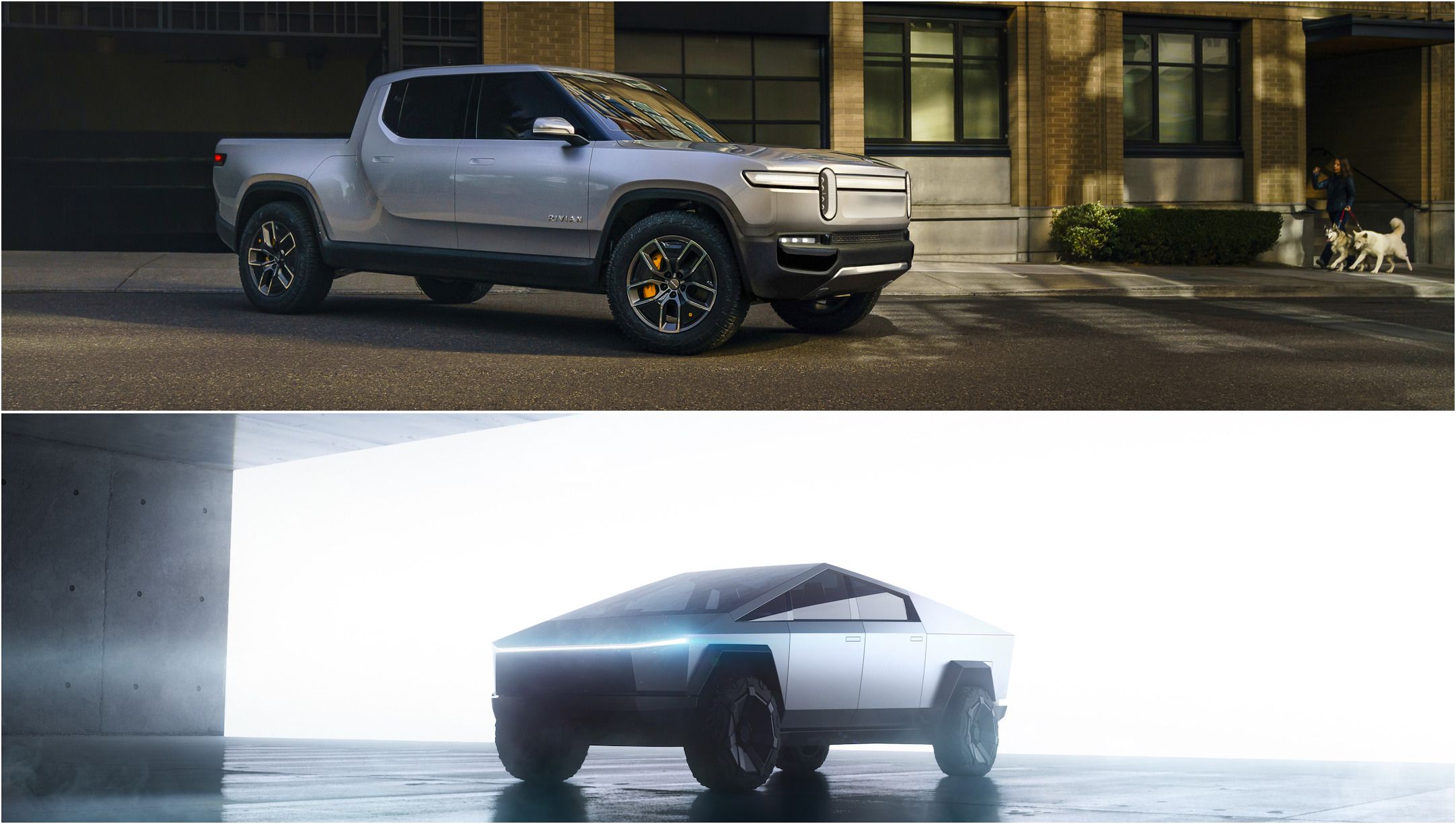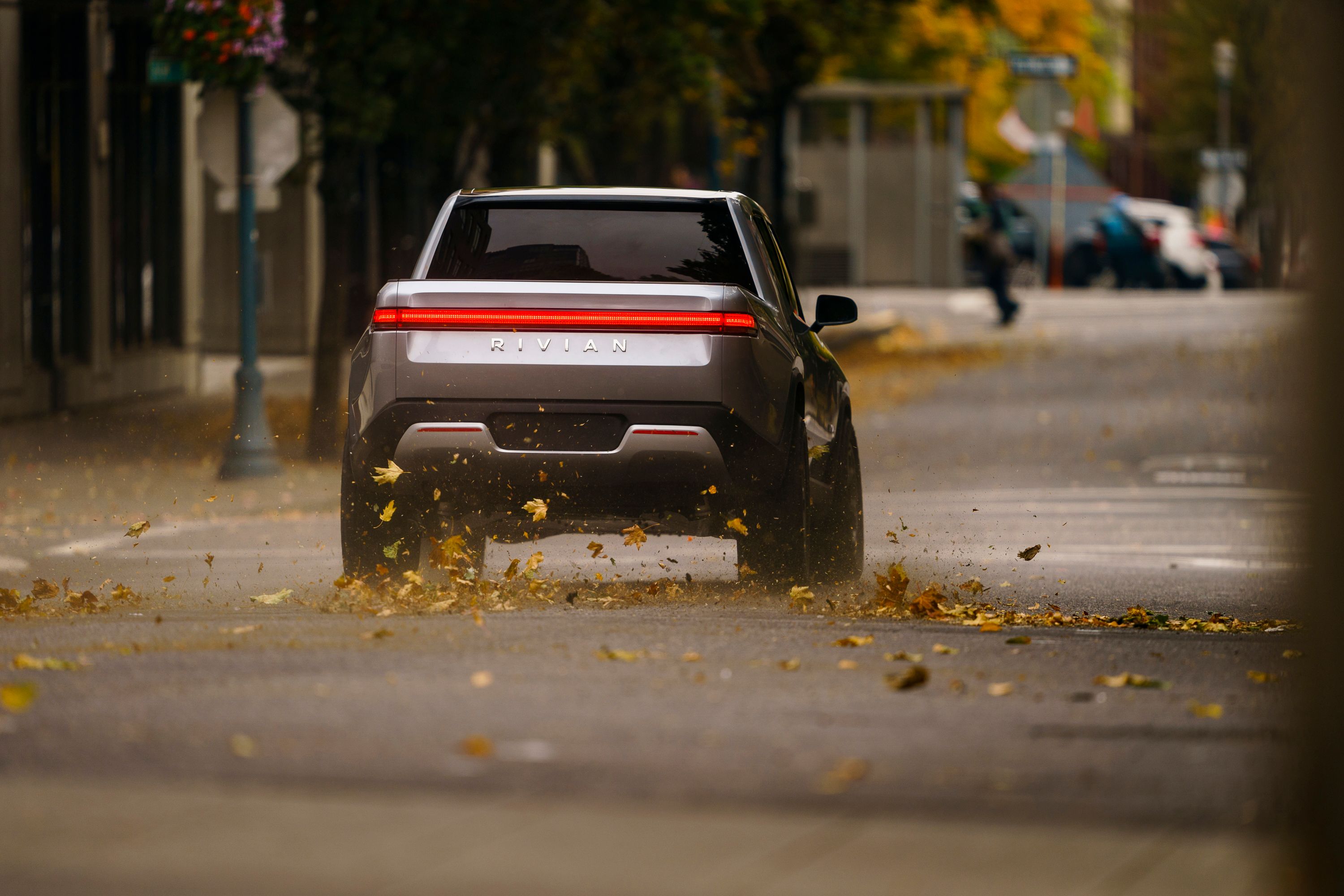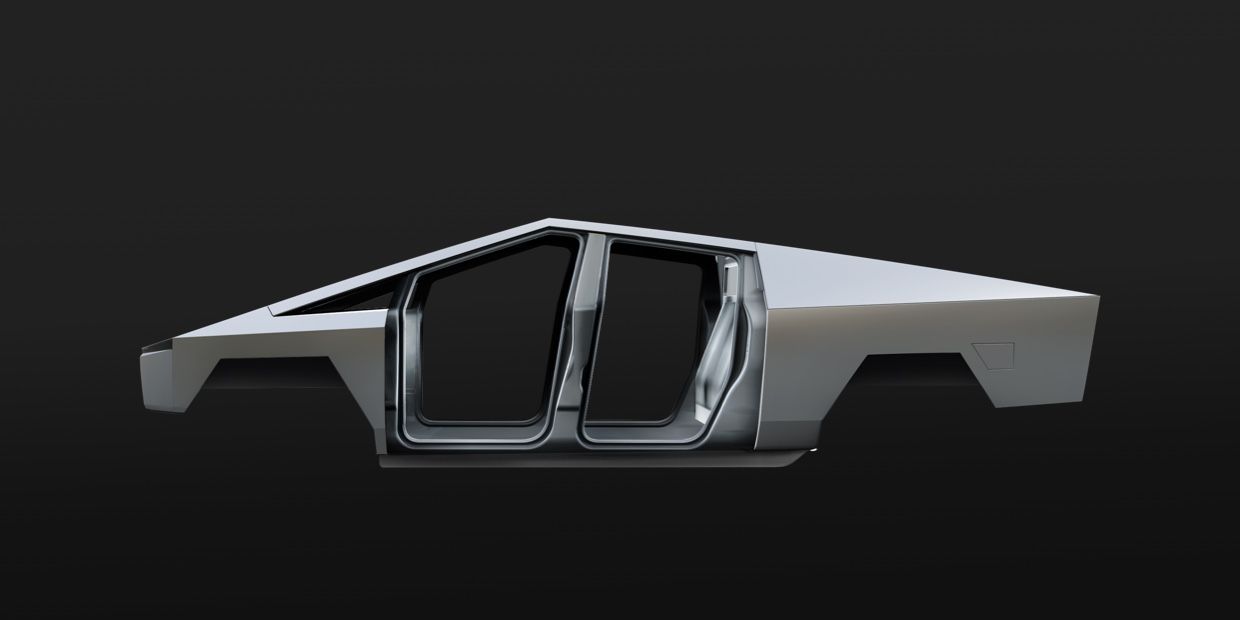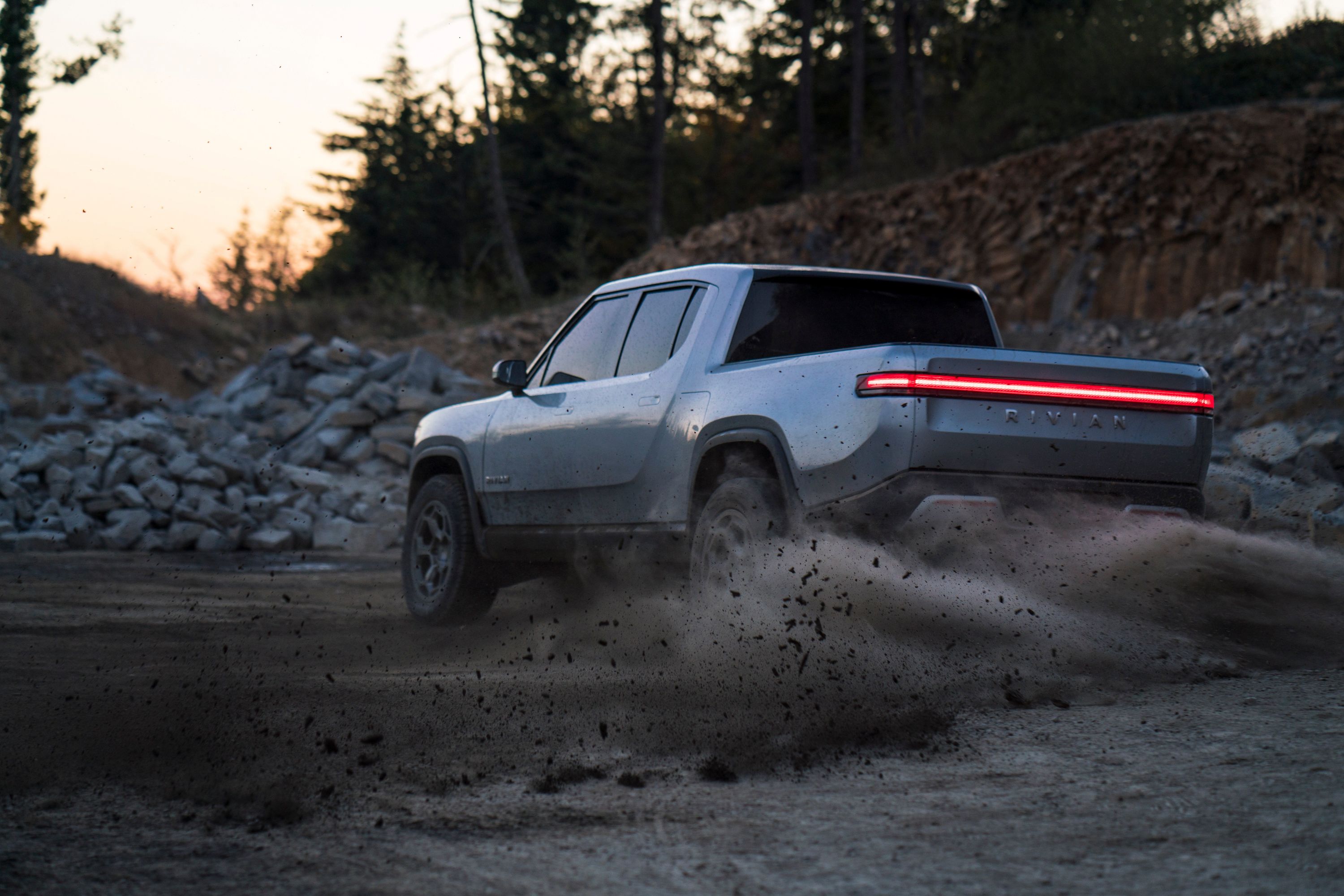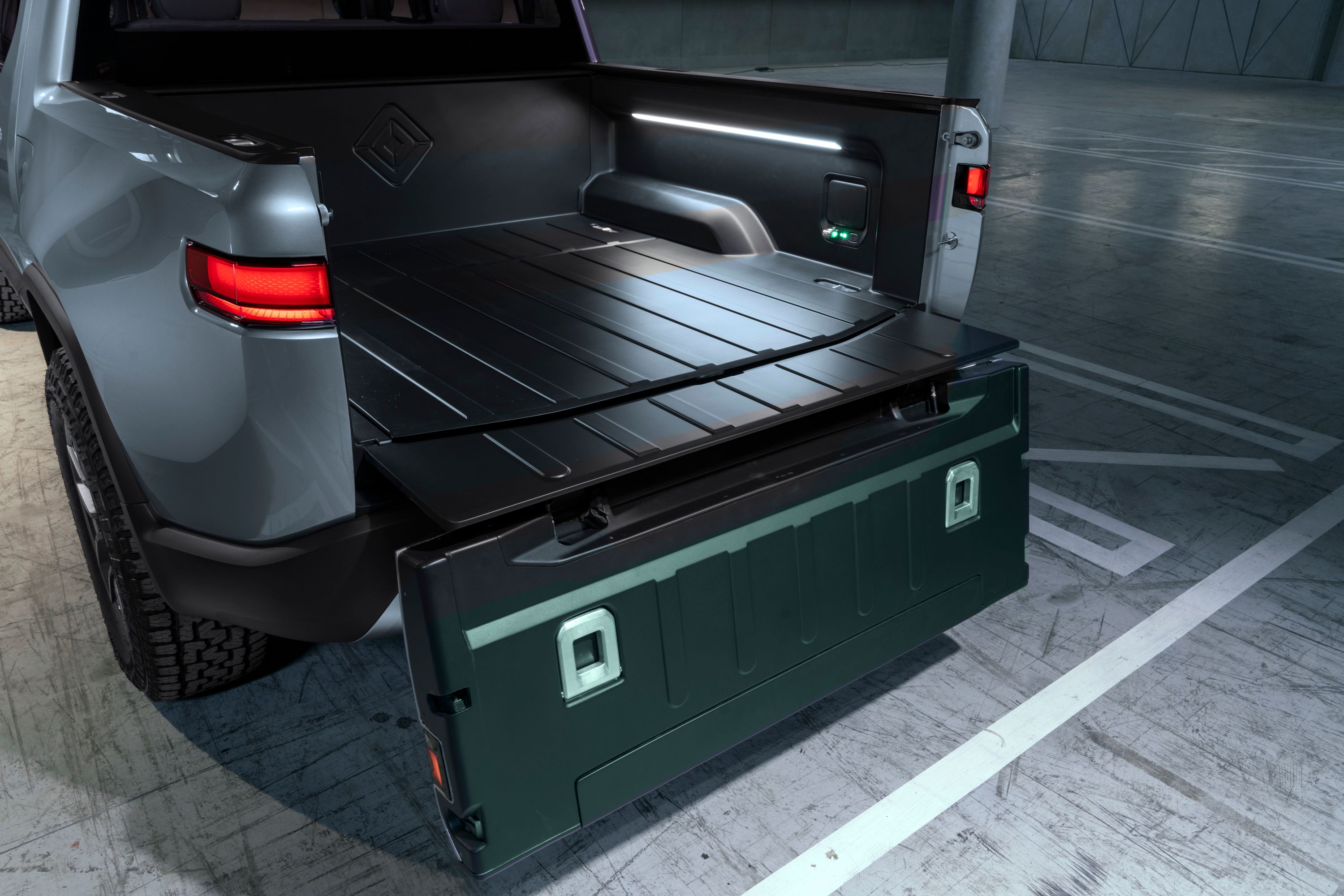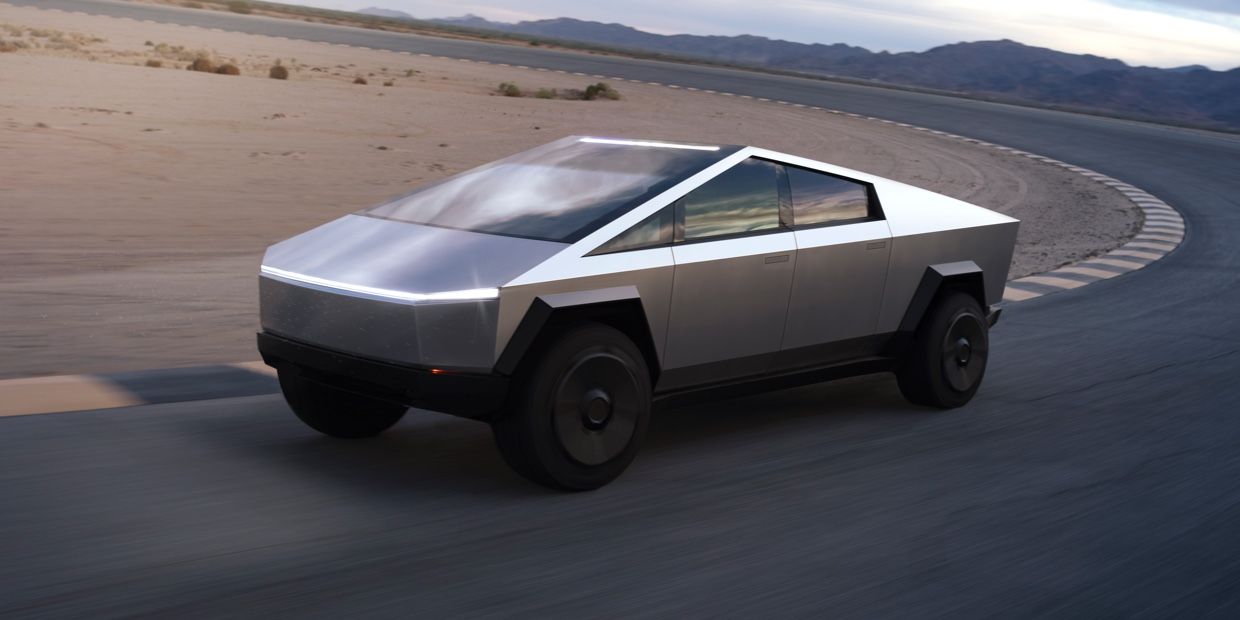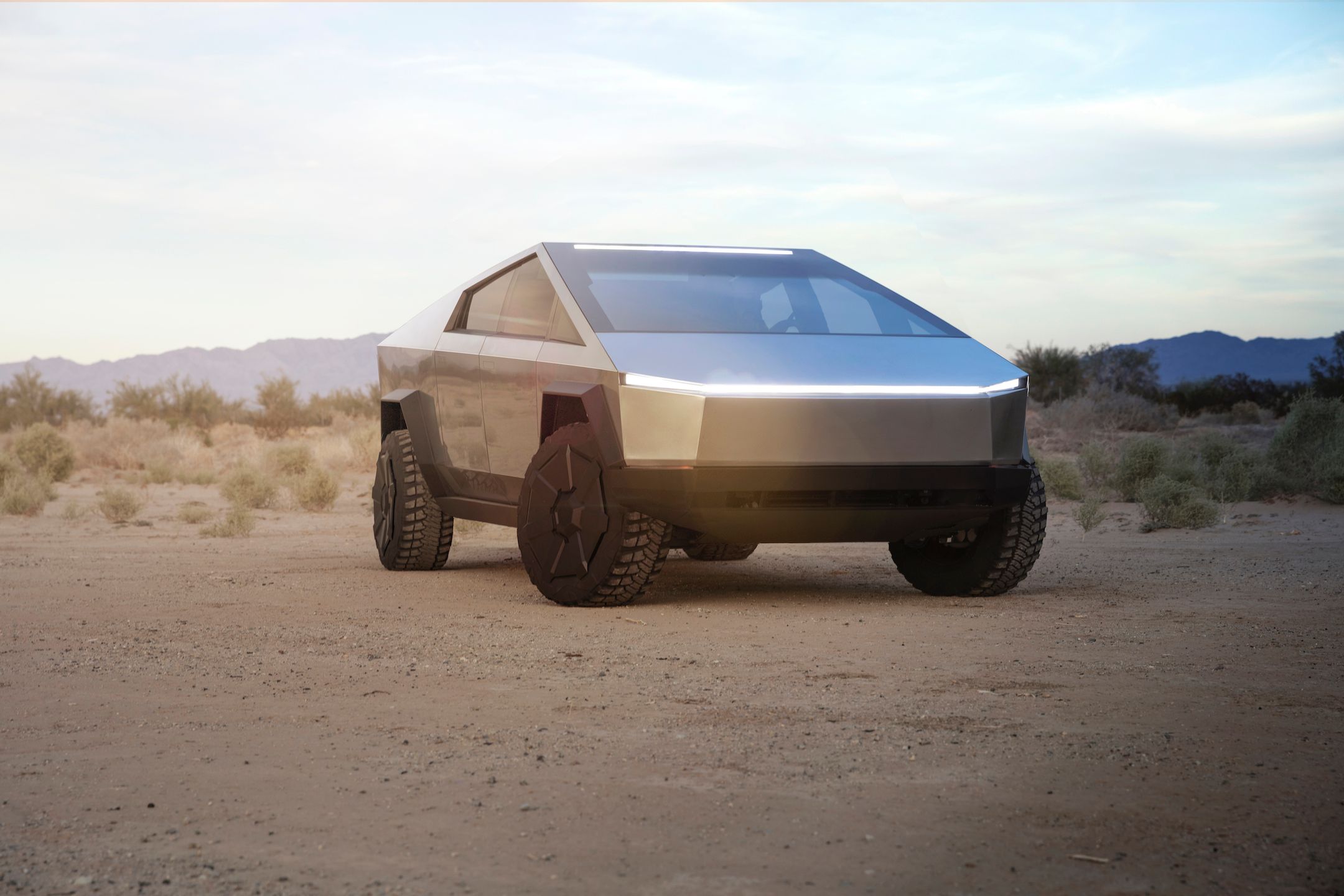Tesla unveiled the Cybertruck, its first properly rugged utility vehicle and first to not follow the 'Model XYZ' nomenclature, last night during an eye-catching launch event with concert lights aplenty as well as aides dressed as if they came from a Blade Runner casting. But away from all the glitz, we've all been asking how the Tesla will compare when pitched against its (potentially) biggest rival, the Rivian R1T? Well, we can finally answer the question.
A more traditional truck or an unapologetically weird truck?
It's been almost a year since Rivian, the upstart that's been working in the doldrums of the auto industry for a decade before coming forth with cutting-edge EVs, took the wraps off its R1T Pickup last year at the L.A. Auto Show. Tesla, in pure Tesla style, decided against attending the 2019 L.A. Auto Show and took all of the attention away from the Californian motor show when it showed to the world the Cybertruck.
With some 270,000 people watching the live stream from around the world, we think the overlapping launch event did the trick and this is exactly what Rivian must wary of: it'll never be able to create as much buzz as Tesla can. But it can surely try to trump its products!
Rivian, with backing from Ford and Amazon, has designed a truck with a more old-fashioned look to it although it still features a straight face with a single light bar across the width of the nose and two oval light clusters placed outboard.
We can safely say that more traditional pickup buyers won't go for the Tesla Cybertruck, at least not at first, simply on grounds of looks. The Tesla is decidedly polarizing with its triangular shape, ultra-short front overhang, and coupe-like retractable bed cover. The Rivian, on the other hand, looks just like any other double-cab truck.
Which one's bigger?
The Tesla Cybertruck was made to look as if it was designed by Ridley Scott for his next sci-fi movie and its acute angles and flat surfaces don't belie its size - it's big, bigger than the Rivian. With a total length of 231.7 inches, it's 0.2 inches shorter than the Ford F-150 Supercab with the 6.5-feet box or the Supercrew with the 5.5-feet box. More importantly, it's a noticeable 16.2 inches longer than the R1T that can only boast with a 4.5-feet bed (the Cybertruck's is a 6.5-feet bed with 100 cubic feet of volume). The Rivian is also 73.3 inches wide and 71.4 inches tall or about 6.5 inches narrower and 3.6 inches lower than the Cybertruck.
|
Truck |
Length |
|
Cybertruck |
231.7 inches |
|
Rivian R1T |
215.5 inches |
How does that translate in practicality? Well, beyond the two-feet longer bed, the Tesla can also fit six adults inside which the Rivian can't, although that's due to the way the cabin's been laid out with a generous double armrest in between the seats of the R1T.
|
Truck |
Width |
Height |
|
Cybertruck |
79.8 inches |
75 inches |
|
Rivian R1T |
73.3 inches |
71.4 inches |
Then again, Tesla's 149.9-inch wheelbase surpasses that of the Rivian by a lofty 14 inches. Both will have both trunks and 'frunks' while the Tesla features extra storing areas in the sloping sides of the bed while the R1T makes room for more stuff in between the rear seats and the bed.
|
Truck |
Wheelbase |
|
Cybertruck |
149.9 inches |
|
Rivian R1T |
135.9 inches |
Which one's better off-road?
A pick-up truck must be rugged and be able to survive abuse over just about any terrain.
Then there's the shape of the thing. It looks like a right triangle with the hypotenuse at the meeting point between the windscreen and the rear tonneau. The shape was dictated by the need for added stiffness and overall rigidity.
The Rivian, meanwhile features a standard body sitting on the skateboard platform that houses the battery. It doesn't come with Tesla's adaptive air suspension that levels itself depending on the load you're carrying but it still is quite good off-road. For instance, in off-road mode, its 34-degree attack angle and 30-degree departure angle better Tesla's stats in the latter department (the Cybertruck's attack angle is better by a meager one degree).
The Tesla counters with a 16-inch max ride height versus just under 14.2 inches in the case of a Rivian with a maximum ramp breakover angle of 26 degrees. We don't yet know what that angle is for the Tesla and we also don't know what's the maximum climbing gradient it can cope with - it's 45 degrees for the R1T. Oh, and the R1T can also go through water as deep as one meter or 39.3 inches. We'd venture the Tesla can attack deeper streams of water but we don't have the numbers to back that up at the time of writing.
|
Truck |
Approach angle |
Departure angle |
Ride Height |
|
Cybertruck |
34 degrees |
30 degrees |
16 inches |
|
R1T |
35 degrees |
28 degrees |
14.2 inches |
Towing and payload
We now know this was merely a joke from Tesla's CEO as he was responding to someone who was asking whether a 30,000-pound max towing capacity is realistic or not. So, for the Cybertruck the numbers are as follow: 7,500 pounds in the case of the entry-level single-motor RWD version, 10,000 pounds for the mid-range dual-motor AWD version, and over 14,000 pounds for the range-topping tri-motor AWD version. The Rivian, meanwhile, will only come with a four-motor (one behind each wheel) AWD setup so the towing capacity is singular, regardless of the battery you choose: 11,000 pounds.
Max payload in the case of the Rivian is rated at 800 kilograms or 1,763 pounds - a while away from Tesla's 3,500 pounds. We expect the Cybertruck to be heavier. The Rivian tips the scales at 5,886 pounds without all that expensive aluminum sheet metal.
|
Truck |
Towing capacity |
Payload |
|
Cybertruck |
7,500-14,000 pounds |
3,500 pounds |
|
Rivian R1T |
11,000 pounds |
1,763 pounds |
Performance and autonomy
It's only natural, then, for Musk's men to take great pride in the fact that the Cybertruck can outrun a Porsche 911 and, in the process, almost everything else on the road despite it looking like a military vehicle.
Tesla only released one set of 0-60 mph and 1/4 mile times during its launch event but we do know the dual-motor Cybertrucks will feature the 'Raven' drivetrain comprising of a single Model 3 motor in the front (good for 275 horsepower and 503 torques) and one Model S motor in the back (adding at least 310 horsepower and 531 pound-feet fo the combined output). In other words, the dual-motor AWD Cybertruck could send to the ground as much as 690 horsepower and 824 pound-feet of torque (estimated by MotorTrend). The single-motor RWD Cybertruck will most likely be underpowered with only one Model 3 motor in the back.
With it in place, the Cybertruck will go from naught to 60 mph in 2.9 seconds en route to a quarter-mile time of 10.8 seconds - not surprising given we've heard 'Plaid' Model S mules put out about 800 horsepower and 1,000 pound-feet of torque. The mid-range model will need 4.5 seconds to reach 60 mph and will top out at 120 mph, 10 mph faster than the entry-level RWD Cybertruck that'll still be spirited as reflected by a 6.5-second 0-60 mph time. Tesla also said that the truck will corner "as if it's on rails", probably thanks in part to that clever suspension.
Let's now take a look at the Rivian's performance figures. It seems that it is a bit more sluggish despite its 764 horsepower max combined output (for the mid-range R1T). In its fastest version, the one with the 135 kWh battery, it'll need three seconds to reach 60 mph and less than seven to reach 100 mph with a projected top speed of 125 mph. The range-topping R1T with the 180 kWh battery gets to 60 mph in 3.2 seconds (0-100 mph in under eight) and, finally, the entry-level model requires almost five to get to 60. No quarter-mile times but we reckon the R1T would have a hard time matching the Tesla despite it being probably lighter.
So, how do they match up in terms of autonomy? We've already mentioned that each comes with three battery options and this translates to varying mileage figures. Tesla claims the entry-level model will go over 250 miles on a charge while the tri-motor version could cover in excess of 500 miles on a single charge (the dual-motor AWD Cybertruck slips in between at +300 miles). The Rivian should die out after 230 miles in its basic trim (with the 105 kWh battery) and over 300 miles with the 135 kWh battery.
But the biggest advantage of the Cybertruck is that it'll make use of the 14,000-strong network of superchargers (including, of course, the V3 superchargers with the 250 kW peak output. The Tesla Pickup will come with 110v/220v onboard outlets so you can recharge it just about anywhere but we don't know what is the recharging time. Thankfully, Rivian did spill out the beans: it can support up to a 160 KW charge which translates to a 50-minute waiting time for the 180 kWh model to go from 5% full to 80% full.
|
Truck |
0-60 |
Power |
Torque |
Range |
Top Speed |
|
Cybertruck |
6.5-2.9 seconds |
690-800 hp |
1,000 lb-ft |
250-500 miles |
110-120 mph |
|
R1T |
4.7-3 seconds |
760 hp |
TBD |
230-400 miles |
TBD |
Price
The bare-boned Cybertruck with the single 'Raven' motor on the back axle starts at $39,900 with the others following suit at $49,900 and $69,900, respectively. All these prices are before you add any government incentives.
The Rivian will pick up where Musk's Cybertruck has left off in terms of pricing with a base MSRP in the region of $69,000 although range-topping R1Ts should sell for about $100,000 and the mid-range one for about $80,000. That's quite hefty especially when you consider the low cost of ownership outlined by Tesla - just $570/mo in the case of the mid-range model, about $130 less than in the case of your typical gas-guzzling F150 with maintenance costs coming in at under $40/mo.
Conclusion
We're already hearing people say the Cybertruck is exciting to drive (or do ride shotgun in), as it acts like a Baja truck over bumps thanks to that quirky suspension. But until someone takes a Rivian and a Tesla and tests them head-to-head we can't say for sure which one's better. What we can say, though, is that a mid-range Tesla edges ahead of a mid-range Rivian in most instances but it may actually be pegged back ultimately by its styling - a risk Tesla knew it had to take in order to continue on its ground-breaking trajectory.

